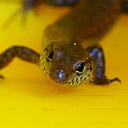Member-only story
Spring Surprise
A blizzard of iridescence
This year has been an exceptional one for butterflies. I have no data to support this — I haven’t made notes or undertaken a census — but it seems to me that butterflies are everywhere. As the dry season comes to a close, Common Blues, Red-banded Jezebels and Orange Bush-browns are making the most of the sun. This year, I’ve seen species I hadn’t encountered here before, including an Evening Brown that I rescued from a spider’s web. (Sorry, spider, but there are plenty of other things to eat.)
It’s also been a great one for moths.
For the past week, hundreds — thousands — of Zodiac Moths (Alcides metaurus, Uraniidae) have visited the garden to drink nectar from the last flowering lillypilly As the morning warms up, the sky is filled with fluttering wings. In the heat of the day, they rest among the ginger plants, waiting to resume feeding in the late afternoon. I have never seen so many of this species in one place. It is a blizzard of iridescence.
